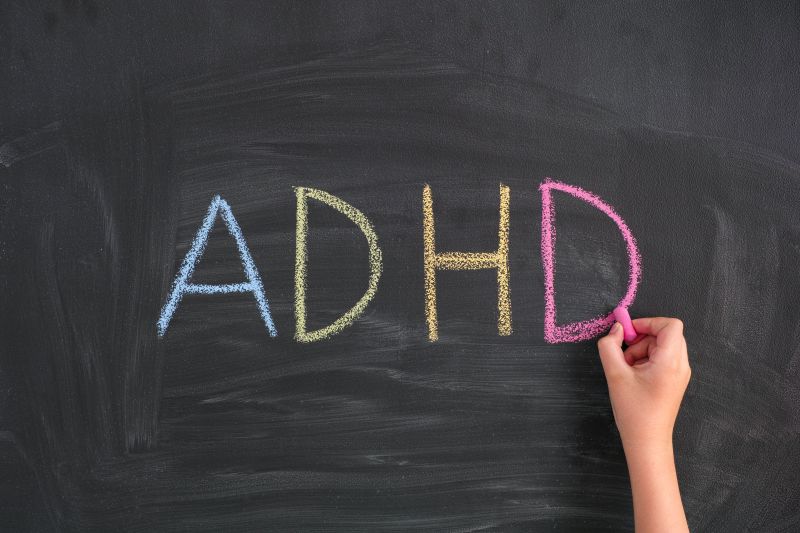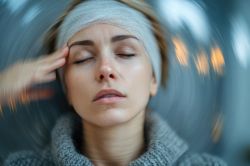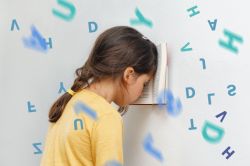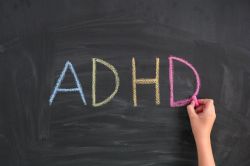The ADHD brain is sensitive, fast, and often in motion. It responds to the world more intensely, thinks along multiple pathways at once, and needs constant stimulation to stay engaged. What might seem like restlessness from the outside is, in truth, the natural rhythm of a brain seeking balance between activation and calm. Multisensory therapy helps to harmonize this rhythm - gently, naturally, and without words.
When the Brain Thinks in Movement
ADHD is not a lack of attention, but a different way of regulating it. The brain responds to stimuli more strongly and more quickly, often jumping between impulses because the nervous system requires a higher level of stimulation to activate. It is not a failure of will, but a neurobiological difference in dopamine and noradrenaline transmission, which affects motivation, reward, and behavioral control.
Research shows that the ADHD brain spends more time in the beta frequency range - a state of heightened activity and alertness. This enhances performance but also increases overload and distractibility. Multisensory regulation helps gently tune the brain toward balance - between activation and relaxation, between movement and stillness.
Multisensory Therapy for the Active Brain
Every brain with ADHD needs a different rhythm of support. The goal is not to slow energy down, but to help it flow more consciously. Therapy works through light, sound, scent, and movement - sensory channels that allow direct communication with the nervous system, beyond language.
- Light - Photobiomodulation (e.g. Vielight Alpha 10 Hz) helps shift from overloaded beta activity to a calmer alpha rhythm, supporting focused attention without strain.
- Sound - Rhythmic frequencies (8-12 Hz) enhance hemispheric synchronization and improve cognitive coherence.
- Scent - Activating aromas (rosemary, lemon, mint) enhance alertness and motivation; calming oils (lavender, marjoram) support parasympathetic balance.
- Movement and touch - Gentle vibration, breathwork, and grounding techniques reconnect body and mind, stabilizing the nervous system.
Through these sensory pathways, the brain learns that it can be awake - and still at peace.
When Energy Becomes Focus
Once the nervous system feels safe, impulses begin to organize themselves. Fragmented attention turns into natural focus that arises from within. Movement stops being an escape - it becomes rhythm. A rhythm that links brain, body, and awareness into one coherent flow. ADHD, then, is not an obstacle but a different way of learning to function in motion - not against it.
Part of the Light Brains series: Neurodivergence and Multisensory Therapy
→ Introduction: Neurodivergence and Multisensory Therapy
→ ADHD and Attention in Motion
→ Autism and Sensory Sensitivity
→ Dyslexia and the Visual Brain
→ High Sensitivity as a Form of Neurodivergence
→ The Creative Brain and Expanded Perception
Sources and recommended Reading
- Barkley, R. A. (2015). Attention-Deficit Hyperactivity Disorder: A Handbook for Diagnosis and Treatment. Guilford Press.→ A comprehensive overview of the n eurobiology of ADHD and its manifestations in brain activity, attention, and behavior.
- Brown, T. E. (2013). A New Understanding of ADHD in Children and Adults: Executive Function Impairments. Routledge. → Reviews research on executive function impairments and their role in emotion and motivation regulation.
- Castellanos, F. X., & Proal, E. (2012). Large-Scale Brain Systems in ADHD: Beyond the Prefrontal–Striatal Model. Trends in Cognitive Sciences, 16(1), 17-26. → Describes differences in functional connectivity and large-scale neural dynamics in ADHD brains.
- Arns, M., Clark, C. R., Trullinger, M., & Breteler, R. M. J. (2020). Neurofeedback and Photobiomodulation in ADHD: Clinical Efficacy and Mechanisms. Frontiers in Human Neuroscience, 14, 110. → Summarizes evidence for the efficacy of light and neurofeedback therapy in supporting attention and cognitive stability.
- Jensen, P. S., & Kenny, D. T. (2004). The Effects of Yoga on the Attention and Behavior of Boys with ADHD. Journal of Attention Disorders, 7(4), 205-216. → Demonstrates how rhythmic movement and breath regulation improve focus and reduce hyperactivity.
This text is part of the Light Brains series on neurodivergence and multisensory balance.
🌐 www.lightbrains.online





